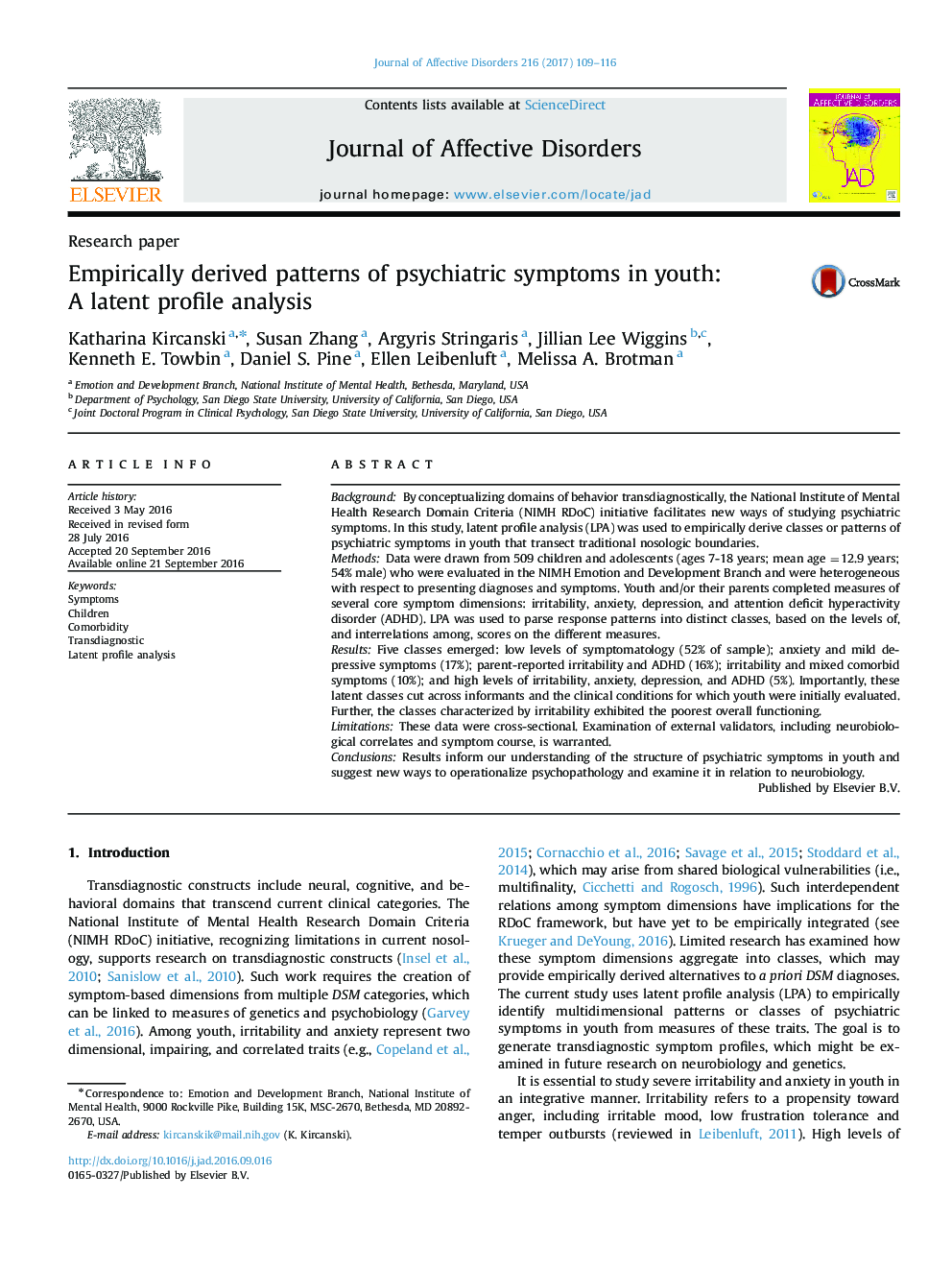| Article ID | Journal | Published Year | Pages | File Type |
|---|---|---|---|---|
| 5722312 | Journal of Affective Disorders | 2017 | 8 Pages |
â¢The NIMH RDoC initiative supports research on transdiagnostic constructs.â¢Pediatric symptoms of irritability, anxiety, depression, and ADHD often co-occur.â¢This study examined how these symptom dimensions aggregate into classes.â¢Five multidimensional symptom classes emerged, which transected diagnostic categories.â¢Results suggest new ways to operationalize developmental psychopathology in relation to neurobiology.
BackgroundBy conceptualizing domains of behavior transdiagnostically, the National Institute of Mental Health Research Domain Criteria (NIMH RDoC) initiative facilitates new ways of studying psychiatric symptoms. In this study, latent profile analysis (LPA) was used to empirically derive classes or patterns of psychiatric symptoms in youth that transect traditional nosologic boundaries.MethodsData were drawn from 509 children and adolescents (ages 7-18 years; mean age =12.9 years; 54% male) who were evaluated in the NIMH Emotion and Development Branch and were heterogeneous with respect to presenting diagnoses and symptoms. Youth and/or their parents completed measures of several core symptom dimensions: irritability, anxiety, depression, and attention deficit hyperactivity disorder (ADHD). LPA was used to parse response patterns into distinct classes, based on the levels of, and interrelations among, scores on the different measures.ResultsFive classes emerged: low levels of symptomatology (52% of sample); anxiety and mild depressive symptoms (17%); parent-reported irritability and ADHD (16%); irritability and mixed comorbid symptoms (10%); and high levels of irritability, anxiety, depression, and ADHD (5%). Importantly, these latent classes cut across informants and the clinical conditions for which youth were initially evaluated. Further, the classes characterized by irritability exhibited the poorest overall functioning.LimitationsThese data were cross-sectional. Examination of external validators, including neurobiological correlates and symptom course, is warranted.ConclusionsResults inform our understanding of the structure of psychiatric symptoms in youth and suggest new ways to operationalize psychopathology and examine it in relation to neurobiology.
